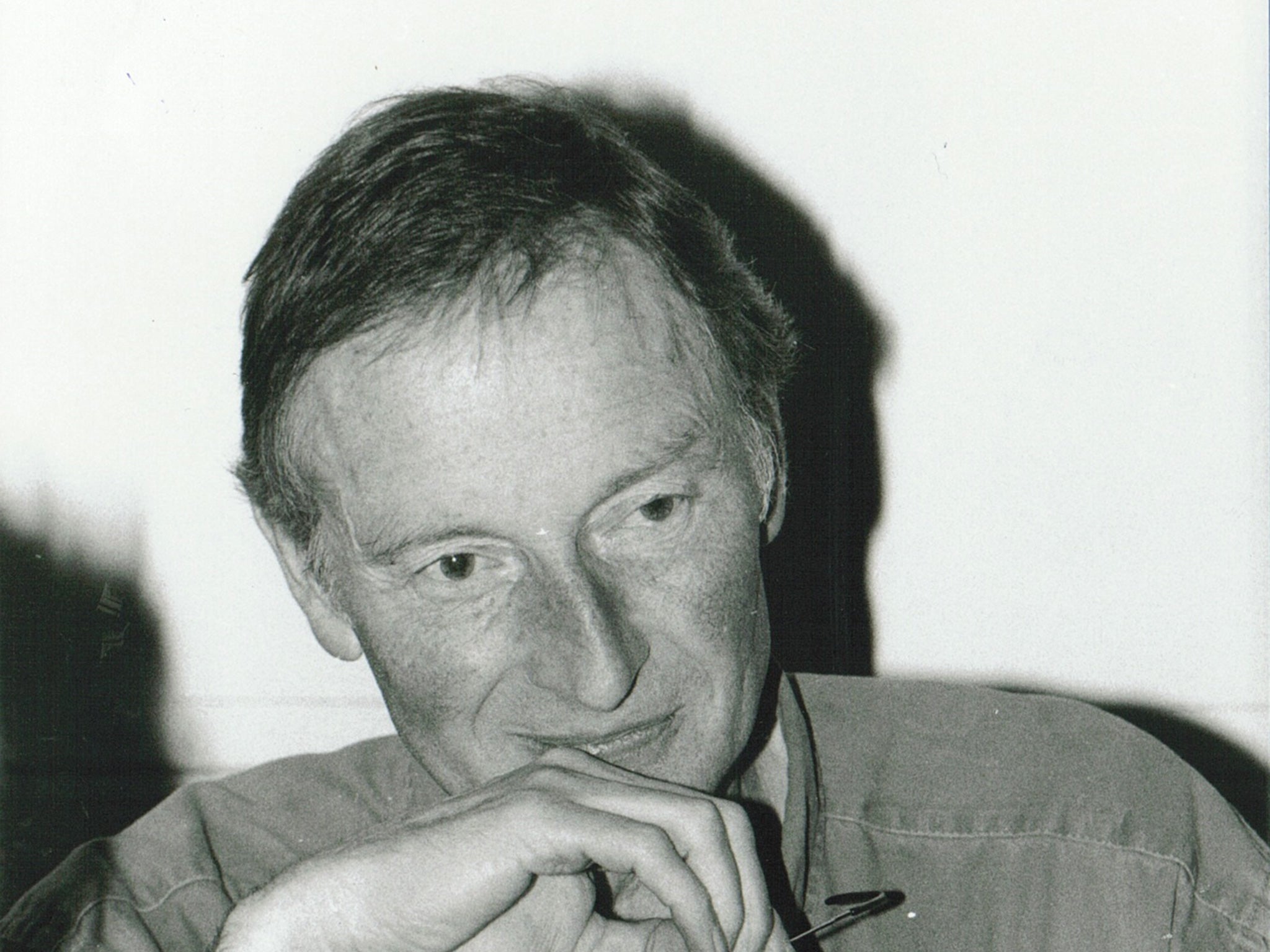Lee Harwood: Writer and teacher whose ever-optimistic work made him a leading figure in the British Poetry Revival
‘His poetry lies open to the reader, like a meadow,’ his friend John Ashbery once wrote

Your support helps us to tell the story
From reproductive rights to climate change to Big Tech, The Independent is on the ground when the story is developing. Whether it's investigating the financials of Elon Musk's pro-Trump PAC or producing our latest documentary, 'The A Word', which shines a light on the American women fighting for reproductive rights, we know how important it is to parse out the facts from the messaging.
At such a critical moment in US history, we need reporters on the ground. Your donation allows us to keep sending journalists to speak to both sides of the story.
The Independent is trusted by Americans across the entire political spectrum. And unlike many other quality news outlets, we choose not to lock Americans out of our reporting and analysis with paywalls. We believe quality journalism should be available to everyone, paid for by those who can afford it.
Your support makes all the difference.Lee Harwood was a pivotal figure in what is still termed the British Poetry Revival. His name evokes pioneering publishers of the last half-century; his translations of the Dada poet Tristan Tzara were published in diverse editions, and he enjoyed a wide acquaintance among the poets of California, New York and England. His poetry was hailed by writers as diverse as Peter Ackroyd, Anne Stevenson, Edward Dorn and Paul Auster .
He was born in Leicester in 1939 and grew up in Chertsey. He survived a German air raid, his bedroom window blown in across his bed one night as he slept. Delicate, gentle, candid and attentive, he was later described by Iain Sinclair as “full-lipped, fine-featured: clear (blue) eyes set on a horizon we can’t bring into focus. Harwood’s work, from whatever era, is youthful and optimistic: open.”
He met Jenny Goodgame at Queen Mary College, London in 1958. They married in 1961, and published single-issues magazines, Night Scene, Night Train, Soho and Horde. They lived in Brick Lane in Aldgate East, then Stepney, where their son Blake was born. While there, Harwood wrote “Cable Street”, a prose collage and anti-fascist testimonial.
His eye for Surrealism led him to seek out Tzara in Paris in 1963, and he gained Tzara’s blessing for his translations. In 1965 he met the US poet John Ashbery. They formed a lifelong bond, of which he wrote in The Man With The Blue Eyes. His book title illegible was published in London by sound poet Bob Cobbing’s Writers Forum in 1965, while the New York poets Lewis Warsh and Anne Waldman at Angel Hair issued The Man With The Blue Eyes with a preface by Ashbery. “Lee Harwood’s poetry lies open to the reader, like a meadow,” he wrote. “It moves slowly toward an unknown goal, like a river. It is carelessly wise, that is, wise without knowing or caring what wisdom is.”
Harwood’s first marriage ended in 1967, and apart from terms teaching in the US and Greece, Brighton became his home. In 1971 he met the photographer Judith Walker, from Massachusetts, when he was teaching in Greece. Photographs by her feature in his collections Boston-Brighton and All the wrong notes.
He trained his eye on the everyday, the commonplace, and he always expressed his practical empathy for the stranger:
on the late night train home
“kind gentle creature he was, died quite young”
heard from the next seat down
“quite diffident, and nervous”
“I shall have to answer at the Pearly Gates.
He declared a passionate love to me,
and I...” (the rest unheard – train noise)
Outside poetry he worked as a British Rail guard, bookshop manager, forester, museum attendant, monumental stone mason, theatre dresser, bus conductor and postal clerk (a framed GPO letter in his bathroom commends his courage defusing an armed raid at Western Road post office, Hove). The tale of mountaineer Harwood waist-deep in snow descending Snowdonia, reaching a reading with 10 minutes to spare is true. But Crib y Ddysgl was also where he saw his poet and climber friend Paul Evans fall to his death in 1991.
Penguin Modern Poets 19 (1971) carried Harwood’s poems alongside Ashbery.In the foreword to his Collected Poems, he writes: “Language is never perfectly reliable but – obvious enough – it’s all we have to talk to one another. It’s to be used as well as possible, as precisely and clearly as possible, but not to be wholly trusted. The complexity of language and people and ‘life’ is to be worked with, accepted, and all their contradictions to be relished.”
Travers Rafe Lee Harwood, poet: born Leicester 6 June 1939; married 1961 Jenny Goodgame (marriage dissolved), 1974 Judith Walker; (one daughter, one daughter deceased, and three sons); died Hove 26 July 2015.
Join our commenting forum
Join thought-provoking conversations, follow other Independent readers and see their replies
Comments